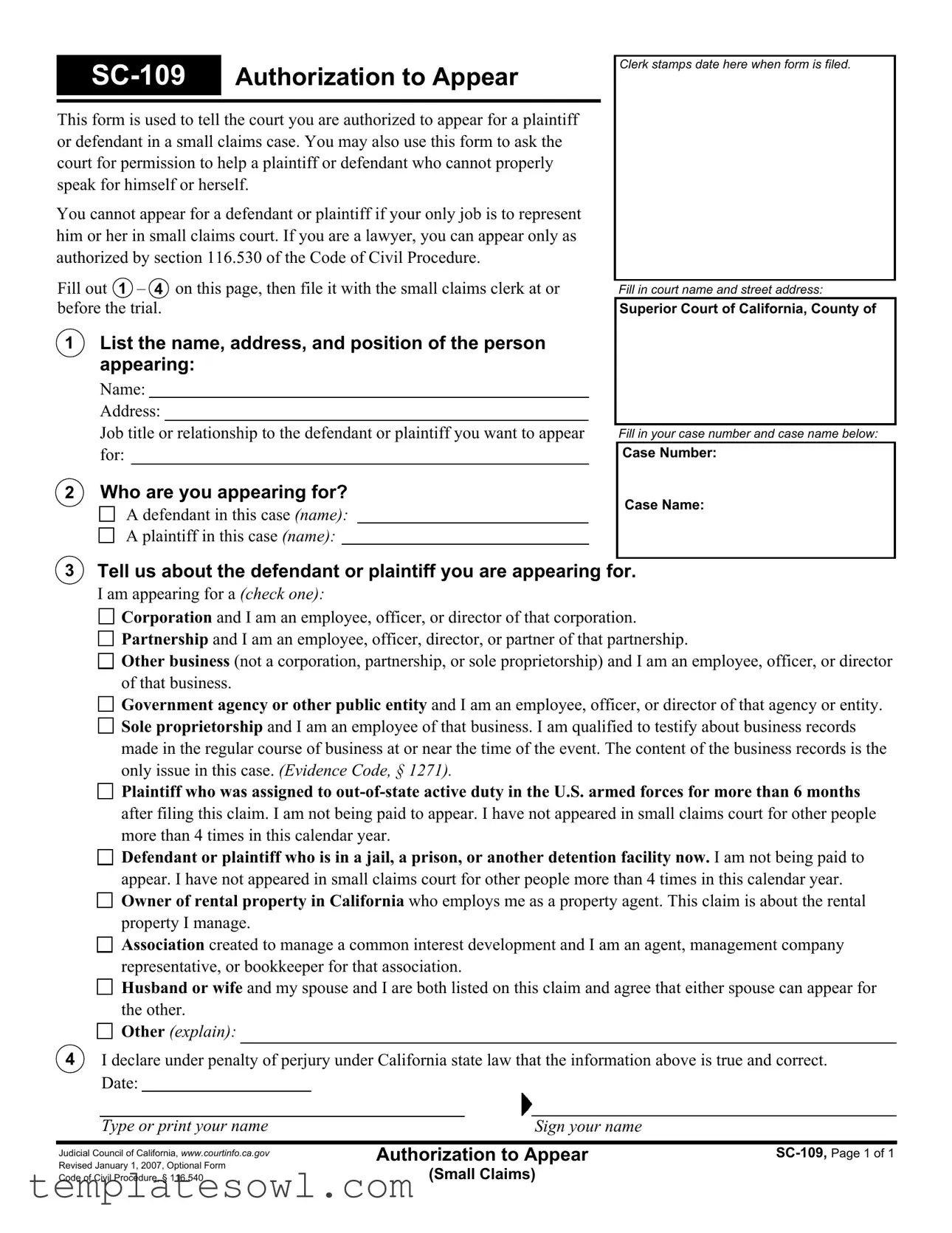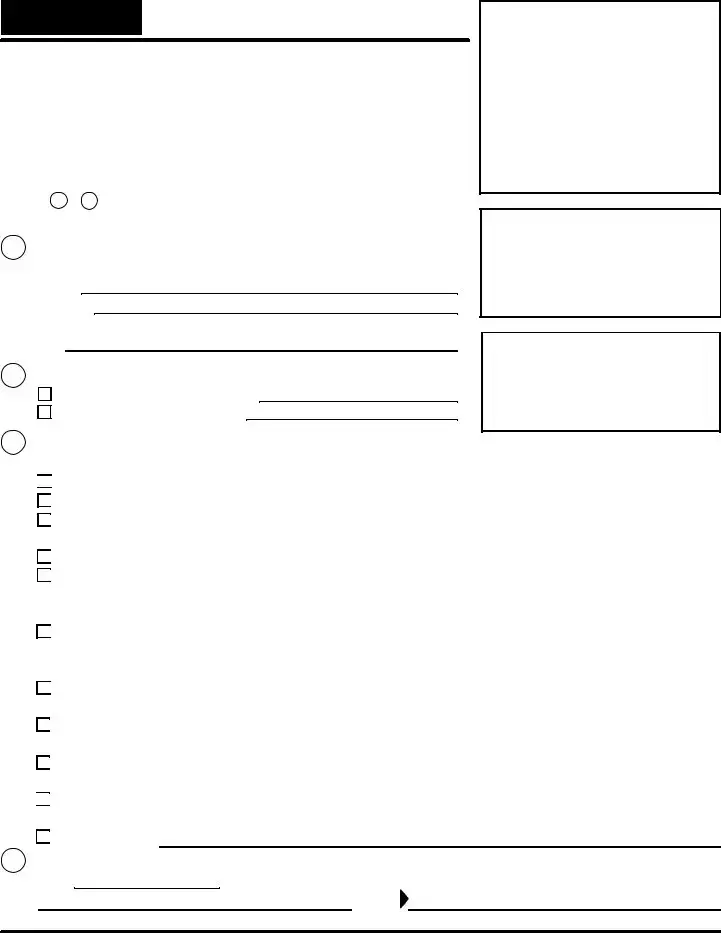Completing the SC-109 form is a critical step when appearing on behalf of a plaintiff or defendant in small claims court. However, errors can complicate this process. Here are nine common mistakes people make when filling out this form.
One prevalent mistake is failing to provide complete and accurate identifying information. The form requires details such as the name, address, and position of the individual appearing. Missing or incorrect information can lead to unnecessary delays or even rejection of the form. Making sure these details are precise is essential, as they establish your authority to represent someone in court.
Another frequent error arises in section two, where individuals must correctly identify whom they are appearing for. Some people either check the wrong box or mistakenly provide the wrong name. This seemingly small oversight can have significant implications in the court's eyes, potentially affecting the case's outcome. Always double-check that you are accurately representing the right party in this section.
In section three, applicants must indicate their relationship to the plaintiff or defendant. A common pitfall is selecting “other” without providing a clear explanation. The court needs to understand the nature of your involvement. Lack of clarity in this section can lead to confusion or skepticism regarding your authority.
Shifting focus, many overlook the legal stipulation regarding appearances. If you are being paid to represent someone or have appeared in small claims court for others more than four times in the calendar year, you may not qualify. This stipulation is crucial and should not be brushed aside. Ignoring it could result in complications during the court hearing.
Many individuals also neglect to sign and date the form, which are essential elements for its validity. An unsigned or undated form can lead to rejection at the clerk's office. Attention to these final steps can save time and ensure your submission is processed smoothly.
Sometimes, individuals also rush through the form and fail to read the instructions comprehensively. Missing out on details that require careful attention to specific legal terms or obligations can lead to mistakes. Taking the time to thoroughly understand what each section entails can minimize these errors.
Another mistake occurs when individuals assume that the court will automatically understand any context, especially if they are representing a government agency or a business. Without explicitly stating your relationship and reasoning in the appropriate sections, the court may not recognize your authority. Clarity in communication is paramount in legal contexts.
Additionally, individuals may mistakenly fail to check for updates or changes related to the SC-109 form. Laws and procedural requirements can change, and relying on outdated guidance can lead to unnecessary errors. Keeping informed through official court resources is vital for filling out the form correctly.
Lastly, it is essential to remember that accuracy and attention to detail are key when filling out the SC-109 form. An overlooked detail can alter your ability to represent someone in court. By understanding common mistakes and taking the necessary precautions, you ensure a smoother filing process, paving the way for effective representation.















 Plaintiff who was assigned to
Plaintiff who was assigned to 
 Defendant or plaintiff who is in a jail, a prison, or another detention facility now.
Defendant or plaintiff who is in a jail, a prison, or another detention facility now. 
 Owner of rental property in California
Owner of rental property in California 






